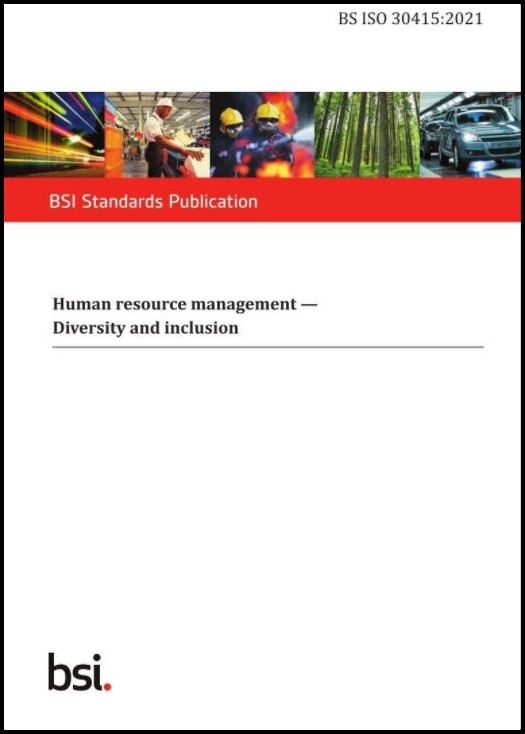The need for organizations to focus on diversity and inclusion (D&I) has never been more pressing, but the complexities involved can discourage some from starting the journey. This blog post explains how a new international standard can help.
Many organizational leaders are now recognizing the need to act on diversity and inclusion (D&I). This is in part because the reaction to some very high profile news stories over the last year has made them realize that what they said or perhaps didn’t say in relation to these stories, individually and collectively, could result in scrutiny and comment by employees, customers and other key stakeholders.
In addition, the whole world has experienced the COVID-19 pandemic, threatening the health of every human being. However research suggests that the disease’s impact has been a disproportionate one depending on, for example, a person’s ethnicity, social class, disability, age, or gender. This has brought D&I and its complexity, especially when intersectionality is involved, into even sharper focus.
And aside from external factors, there are internal ones related to D&I that suggest there’s value in the use of well-founded guidance. These factors are more intrinsic in nature, directly and indirectly affecting the operations and sustainability of an organization. They can include:
- Ethical and principled organizational governance, leadership, and effective management policies, processes and practices
- All aspects of the employment lifecycle, i.e. an individual’s recruitment, development, wellbeing, performance, contribution, retention and exit
- Relationships with, for example, customers, contingent workers, suppliers and other stakeholders
- Product or service design, development and delivery
These issues have relevance to all organizations, wherever they’re located, irrespective of any other external events. It all suggests that organizations could benefit from employing informed guidance, developed by people with experience and expertise in the field, to assist them when understanding D&I’s relevance to them, and in managing their responses. So where, then, should organizations turn for help?
Effective D&I guidance
Historically, UK organizations seeking to identify the most effective D&I guidance to adopt have found a number of different frameworks and approaches, ranging from direction that’s related to a specific protected characteristic, to other HR-focused or more holistic methodologies.
Then in 2017, BSI published BS 76005:2017 Valuing people through diversity and inclusion. This guidance standard added another tool to the list of choices that UK organizations could make in determining the best approach for their individual circumstances.
BS 76005 was a component in the wider BS 76000 “valuing people” series. However, it encompassed more than HR processes alone and recognized the relevance of external factors such as an organization’s relationships with customers and supply chain partners.
Notwithstanding, if the premise of D&I being of global relevance is true, while BS 76005 offered valuable guidance and direction, as a purely British standard it became clear that it might not fully support organizations operating internationally, nor could it meet the requirements of, and acceptance by, a global marketplace. Consequently, work soon got underway on developing its international successor: BS ISO 30415:2021 Human resource management — Diversity and inclusion.
The international standard
BS ISO 30415 was at first developed through physical gatherings, and latterly, once the pandemic struck, via virtual meetings. With UK representatives on the drafting committee, a strong case was made for the general BS 76005 approaches being retained in the new ISO. For example, both standards feature a conceptual diagram to explain content, scope and direction, and both are based on the need to have certain principles or fundamental pre-requisites in place as the foundation for D&I activities within an organization.
BS ISO 30415:2021 will now replace BS 76005:2017, which will be withdrawn on 1 May 2023, giving those who’ve adopted the BS time to transition. There are good reasons to adopt the new ISO, including its logical structure, as it starts off by describing organizational requirements and the pre-requisites that are needed for an organization to successfully embed D&I in its structures. Account should also be taken of the fact that the drafting committee comprised considerable diversity of thought, experience and expertise. It was also crafted during the COVID pandemic, suggesting it takes account of the need for change and flexibility.
In addition, BS ISO 30415 was designed to be suitable in a global setting, allowing organizations with internationally-based operations to adopt the same guidance. And unlike BS 76005, the newer ISO takes account of relevant UN Sustainable Development Goals, giving the organizations that adopt it even more relevance and credibility.
Post COVID-19
Organizations will soon need to prepare for a post-COVID-19 world, where there will be greater human interaction. Other high profile news stories, such as those alluded to at the start of this blog, will emerge; and undoubtedly, organizations and their leaders will be judged by how they respond. As people contemplate returning to the workplace, they will want to be reassured that they’ll be managed fairly and equitably. And as organizations fight for new markets and customers, they will also be wise to understand any differing cultural requirements and ensure they source suppliers that operate ethically. These are all compelling reasons for organizations of any size and sector to consider D&I as a strategic imperative. Adopting the guidance within BS ISO 30415 will help them on their journey towards inclusion, however complex managing diversity appears to be.
Kevin Bowsher QPM, Assoc CIPD, FRSA, FICRS,
Equality, Diversity and Inclusion Lead
Mace Group Equality, Diversity and Inclusion Lead
ISO/TC 260/WG 8 committee member
HCS/1/2 committee member




